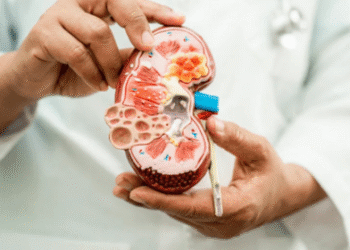1. Understanding Endoscopy
Endoscopy is a medical procedure used to examine the interior of the body’s organs or cavities using an endoscope, a flexible tube with a camera and light source attached.
2. Definition of Gastroscopy
Gastroscopy is a specific type of endoscopy that focuses on examining the upper gastrointestinal tract, including the esophagus, stomach, and duodenum.
3. Scope of Examination
Endoscopy can be used to visualize various organs and structures throughout the body, including the digestive tract, respiratory system, urinary tract, and reproductive system.
4. Targeted Area in Gastroscopy
Gastroscopy specifically targets the upper gastrointestinal tract, allowing the physician to examine the lining of the esophagus, stomach, and the beginning of the small intestine (duodenum).
5. Diagnostic Purposes
Endoscopy is a versatile procedure used for both diagnostic and therapeutic purposes, allowing physicians to visualize abnormalities, take tissue samples (biopsies), and perform interventions such as removing polyps or stopping bleeding.
6. Diagnostic Focus of Gastroscopy
Gastroscopy is primarily used for diagnostic purposes, such as identifying conditions like gastroesophageal reflux disease (GERD), gastritis, peptic ulcers, and esophageal or gastric cancer.
7. Instrumentation
Endoscopy may involve the use of various types of endoscopes, depending on the area of the body being examined, such as bronchoscopes for the lungs or colonoscopes for the colon.
8. Specific Instrument for Gastroscopy
Gastroscopy utilizes a gastroscope, a specialized type of endoscope designed specifically for examining the upper gastrointestinal tract.
9. Procedure Technique
During an endoscopy, the endoscope is inserted through a natural opening in the body, such as the mouth or anus, or through a small incision in the skin.
10. Procedure for Gastroscopy
Gastroscopy is typically performed by inserting the gastroscope through the mouth and guiding it down the esophagus into the stomach and duodenum.
11. Sedation Options
Endoscopy and gastroscopy procedures may be performed under sedation to ensure patient comfort and relaxation during the examination.
12. Risks and Complications
Both endoscopy and gastroscopy carry minimal risks, including bleeding, infection, perforation, and adverse reactions to sedation, although these complications are rare.
13. Pre-procedure Preparation
Patients undergoing endoscopy or gastroscopy may be required to fast for a certain period before the procedure to ensure a clear visualization of the organs being examined.
14. Post-procedure Care
After endoscopy or gastroscopy, patients may experience mild throat discomfort or bloating, but these symptoms typically resolve quickly, and patients can resume normal activities shortly after the procedure.
15. Clinical Applications
Endoscopy has a wide range of clinical applications beyond gastroscopy, including colonoscopy for examining the colon, bronchoscopy for the lungs, and cystoscopy for the bladder.
16. Role in Disease Diagnosis
Both endoscopy and gastroscopy play crucial roles in diagnosing a variety of gastrointestinal conditions, enabling physicians to make accurate assessments and develop appropriate treatment plans.
17. Importance of Screening
Gastroscopy, in particular, is an important screening tool for detecting early signs of esophageal and gastric cancers, as well as other gastrointestinal disorders that may require intervention.
18. Therapeutic Interventions
In addition to diagnosis, endoscopy allows for therapeutic interventions such as the removal of polyps, dilation of strictures, placement of stents, and control of bleeding.
19. Physician Expertise
Performing endoscopy and gastroscopy requires specialized training and expertise to ensure safe and effective procedures and accurate interpretation of findings.
20. Advancements in Technology
Advancements in endoscopic technology, such as high-definition imaging and narrow-band imaging, have improved the diagnostic accuracy and therapeutic capabilities of both endoscopy and gastroscopy.
21. Accessibility and Availability
Endoscopy and gastroscopy procedures are widely available in hospitals, clinics, and specialized endoscopy centers, making them accessible to patients across various healthcare settings.
22. Patient Education and Awareness
Educating patients about the differences between endoscopy and gastroscopy, as well as the importance of these procedures in maintaining gastrointestinal health, is essential for promoting awareness and encouraging proactive healthcare management.
23. Collaboration with Healthcare Providers
Physicians, gastroenterologists, and other healthcare providers collaborate closely to ensure seamless coordination of care and optimal patient outcomes for individuals undergoing endoscopy or gastroscopy.
24. Cost Considerations
The cost of endoscopy and gastroscopy procedures may vary depending on factors such as the healthcare facility, location, type of sedation used, and any additional interventions or tests performed during the procedure.
25. Conclusion: Importance of Early Detection
Understanding the difference between endoscopy and gastroscopy is essential for patients and healthcare providers alike. These procedures play critical roles in diagnosing gastrointestinal conditions, enabling early detection, intervention, and improved outcomes for patients. Regular screenings and timely interventions can lead to better gastrointestinal health and overall well-being.













